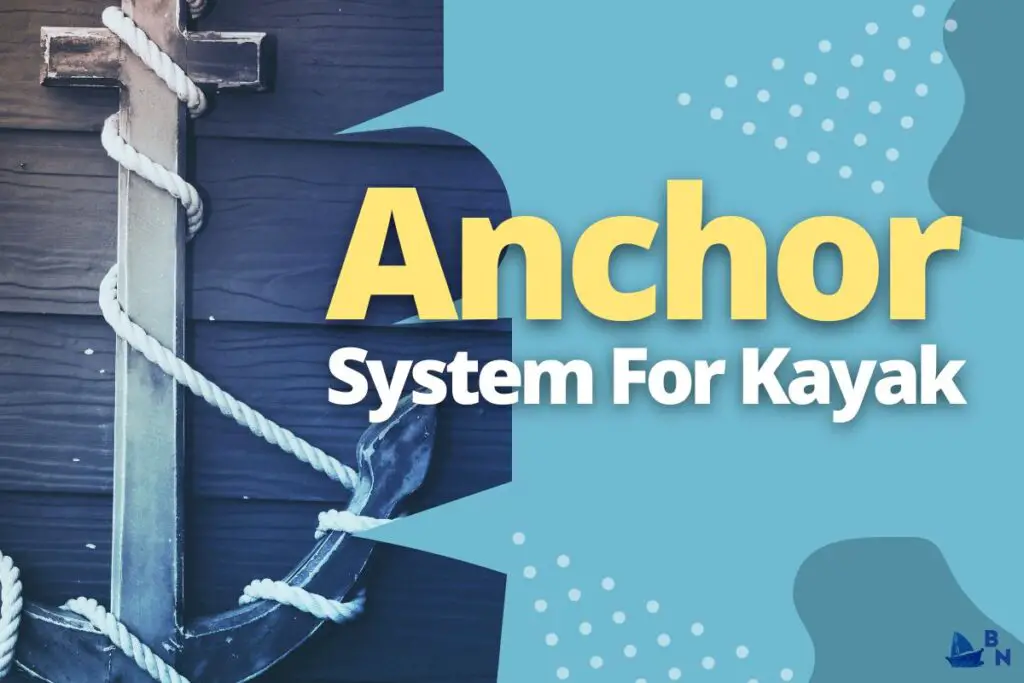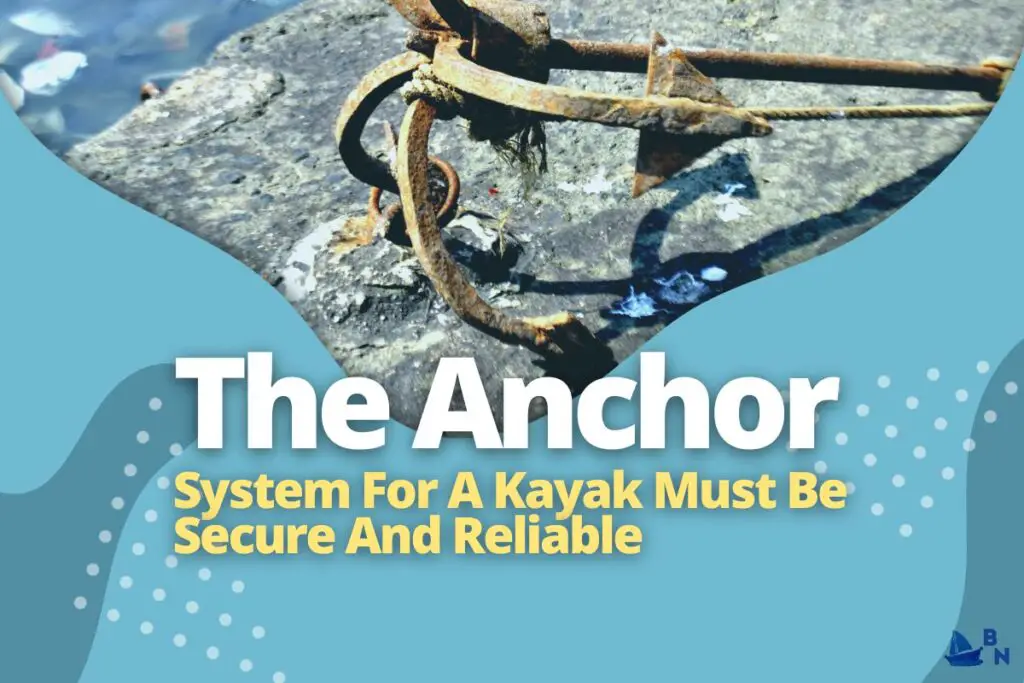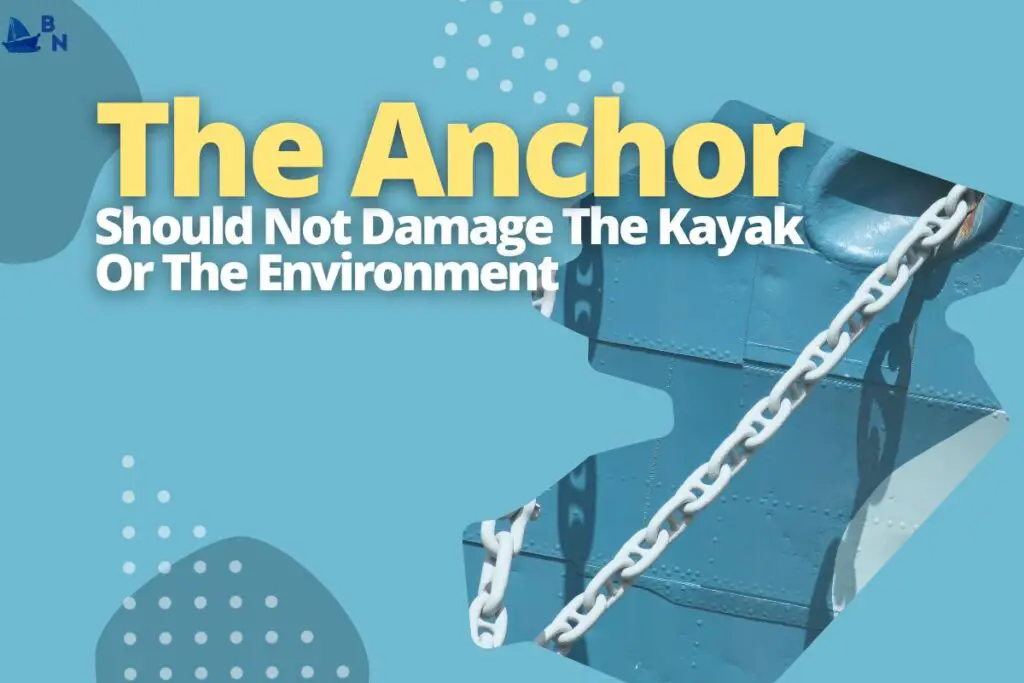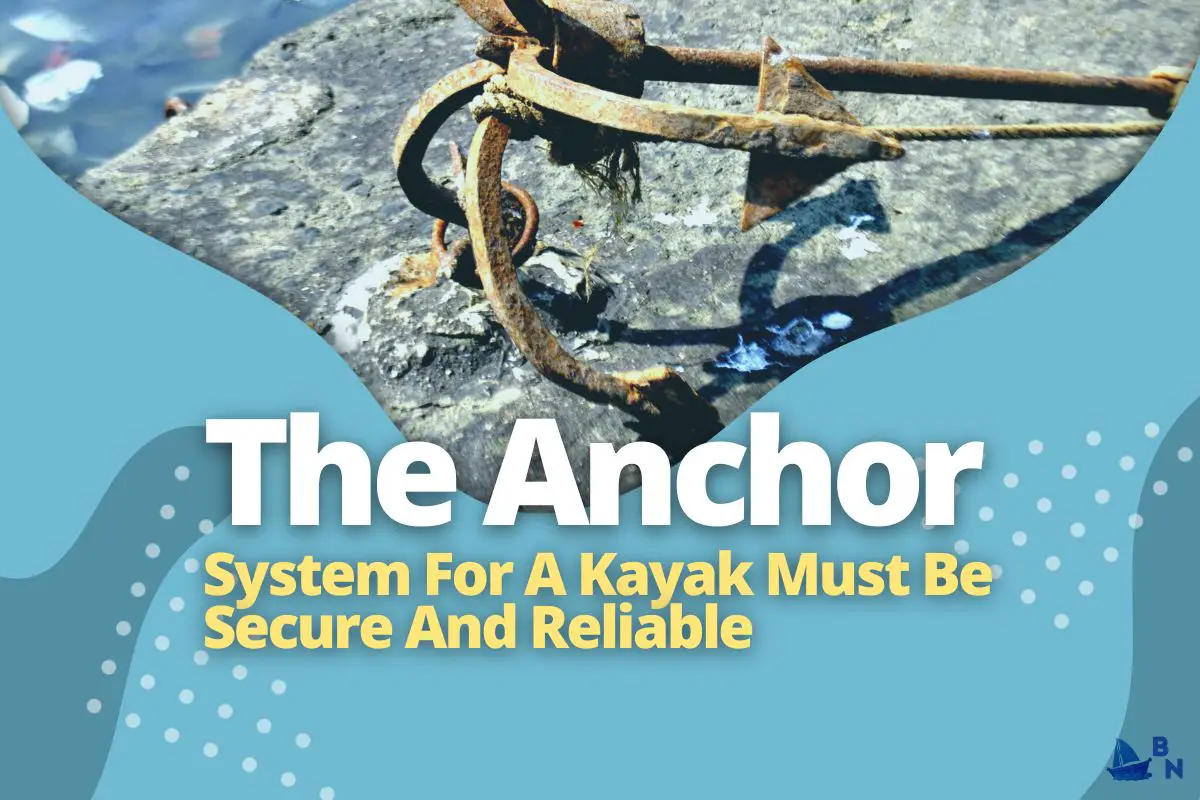As a beginner, it is hard to know what kind of anchor system you need for your kayak. Do you need an anchor trolley? How do you attach an anchor to your kayak? What are the different types of anchors?
In this blog post, I will answer all these questions and more. I will give you a beginner’s guide to the kayak anchor system. I’ll explain how to choose the best anchor system for your kayak and what you need to know to do so.
So continue reading if you’re a newbie and want to understand more about the kayak anchor system.
Key Takeaways
- Anchor systems are important for keeping your kayak in place while fishing or enjoying other activities.
- There are a variety of anchor systems available on the market, so it is important to choose one that is right for your kayak and your needs.
- The most popular type of anchor system is the stake-out pole, which can be used in shallow and deep water.
- Another popular option is the sand anchor, which is great for use in shallow water and sandy bottom areas.
- Finally, the weight anchor is a good choice for deeper water applications.

What Is An Anchor System For Kayak?
Anchoring a kayak can be a daunting task, but it can be easily accomplished with the right anchor system. Many types of anchors are available on the market, but not all are created equal.
- Size and weight are two important considerations when selecting an anchor system for a kayak. The larger and heavier the anchor, the more difficult it will be to set and retrieve.
- However, a heavier anchor will provide more holding power. Choose a compact and lightweight anchor for easy storage and transport but still large enough to provide adequate holding power.
- Another important consideration is material. Anchors made from stainless steel or aluminum alloy are durable and corrosion-resistant.
- Nylon anchors are lightweight and easy to store, but they may not have the same holding power as heavier metals. PVC anchors are another option but are not as durable as metal anchors.
- When choosing an anchor line, look for one made from nylon or polypropylene rope. These materials are strong and resistant to abrasion.
The line length should be at least twice the depth of the water you will anchor. A carabiner or pulley can be used to attach the line to your kayak.
The best way to secure your kayak is with an anchor trolley kit. You can do this without leaving your kayak and changing the direction of your anchor line.
The Anchor System For A Kayak Must Be Secure And Reliable

Your anchoring system must be secure and reliable when you’re out on the water. Even if you are just sitting in your kayak and not surfing or fishing, the anchor must hold your kayak in place in all conditions.
Whether it’s a rocking boat or choppy water, an unreliable anchor system can cause damage to your boat as well as any other equipment that may be attached to it.
It’s also important that an anchor system doesn’t damage the environment around you. You don’t want to try to camp on someone else’s beach and accidentally leave trash behind or damage their property.
The easiest method to guarantee a successful voyage is to choose an anchoring system that is simple to set up and take down, allowing you to focus on having fun instead of worrying about whether your gear is safe from harm.
It Must Be Easy To Set Up And Take Down
An anchor system must be easy to set up and take down. This is crucial since you don’t want to risk damaging your kayak or your fishing gear by wasting time in difficult weather conditions dealing with your anchor system.
A good anchoring system should have a Quick-Release line so that it can easily be disconnected if necessary. This way, you won’t find yourself stranded on the water if something goes wrong while setting up your anchor system.
The best anchor system for kayaking should be easy to use, store and transport. It should also be easy to set up and take down in all conditions.
The Anchor System Should Be Able To Hold The Kayak In Place In All Conditions
You might think your kayak is a delicate boat, but it’s quite sturdy, and you can use the anchor to keep it in place even in strong waves.
The anchor system should be able to hold the kayak in all conditions.
When choosing an anchor system for your kayak, you should look for one that can be used in all conditions: windy weather, rough seas and strong currents.
Choosing a straightforward design with no intricate attachments or parts is an excellent approach to guarantee this.
The Anchor Should Not Damage The Kayak Or The Environment

An anchor system should not damage the kayak or the environment. This means you need to choose an anchor system made from durable materials and has safe construction features.
For example, choosing an anchor system with a Midsize line reduces weight. It improves buoyancy so it can handle stronger ocean currents.
To avoid doing this, you should avoid rocks and sand (which can damage your hull), coral or other delicate marine life (which may be damaged and/or killed), damaging the kayak or the environment (which will damage your boat) and damaging other boats or people (which could cause a tragic accident).
The Anchor System Should Be Affordable And Easy To Use
When choosing an anchor system for kayaking, it’s important to find one that fits your needs.
- Cost: The cost of the anchor system should be reasonable. If the cost is too high, you may have trouble affording it in the future. If the cost is excessively cheap, though, there can be a problem.
- Ease of use: An easy-to-use anchor system will make your life much easier when it comes time to set up camp or go on an adventure! If you can’t figure out how to use your new gear immediately, then maybe you should consider looking at another option.
- Reliability: When choosing an anchor system for kayaking purposes (or any other kind), reliability is essential because if something breaks down during a trip, everything will stop moving forward until repairs are made. This would not be ideal when trying out new things like kayaking. So take extra care when shopping for these products online because sometimes what looks good online doesn’t always translate into reality.
Why Do You Need A Kayak Anchor System?

In the ocean, the force of water is strong and unforgiving. In the ocean, a kayak can be used in a variety of ways. You may want to explore underwater caves or fish along the shoreline.
However, there are also times when you want to keep your kayak in one place so that nothing drags it out into open waters.
This is when you need to attach an anchor system to your kayak’s hull and ensure it stays stationary until you’re ready for another adventure.
How To Use A Kayak Anchor System?
Attaching the anchor to your kayak can be tricky, but it’s not impossible. Finding a spot in the water that is deep enough for you to drop the anchor is the first thing you should do.
For example, “As soon as I realized how much I loved my new kayak, I wanted to ensure it was safe from danger.”
Once you’ve found this spot, there are two different ways of attaching an anchor system: attaching it directly to yourself or attaching it somewhere on your boat.
Attaching directly onto yourself seems like an easy solution; however, the weight distribution on small boats (like kayaks) can cause some problems with balance and control.
Suppose this happens while using a paddle float between paddles during heavy winds or currents. The one holding onto both ends will hold all four together. At the same time, they try not to drag each other down into deeper waters due to either current strength or wind direction.
Best Places To Use Your Kayak Anchor

The best place to use your kayak anchor is in the middle of a lake, surrounded by pine trees and crickets. The lake is calm and quiet, and you see nothing but clear blue skies hovering above your head as you look around.
The air around you smells like freshly cut grass and flowers. In front of you sits a table with two glasses filled with iced tea—one for yourself and one for a friend who has joined you on this special occasion.
You’ve invited them because they are friends and because today is National Friendship Day (don’t worry if it isn’t; any day can be National Friendship Day).
As these two friends sit together enjoying their drinks, they begin discussing their favorite things about each other: how funny one friend is when she tells stories; how kind another friend always seems.
How To Choose The Right Kayak Anchor System?
Choosing the right anchor system means choosing one appropriate for the water you will be using it in.
Check the waters where you will be kayaking, or if you have no choice but to use your anchor in a different type of water than expected, read through this guide and do extra research before deciding on any particular system.
Also, consider whether or not your boat has enough room for placing an anchor system on board; if there isn’t any space available, then perhaps the best option would be getting a more portable version of what’s needed rather than trying to fit something bulky into your small kayak.
Finally (and most importantly), make sure that whatever type of anchor system you choose matches what kind of kayak owner/boater YOU are.
Maybe some people like being outdoors all day, so they don’t mind bringing extra equipment such as tent poles; however, others prefer having smaller items since they’re worried about weight limits when traveling.
Conclusion
If you’re in the market for an anchor system for your kayak, you should keep a few things in mind. Consider the size and weight of the anchor.
Think about the type of bottom you’ll be anchoring in most often. Third, decide what kind of deployment system you prefer. And finally, choose a system that’s compatible with your kayak model.
We hope this article has helped guide your decision-making process. Be sure to check out our other articles for more great tips and advice. And don’t forget to stay tuned for updates on our website and other social media channels.

